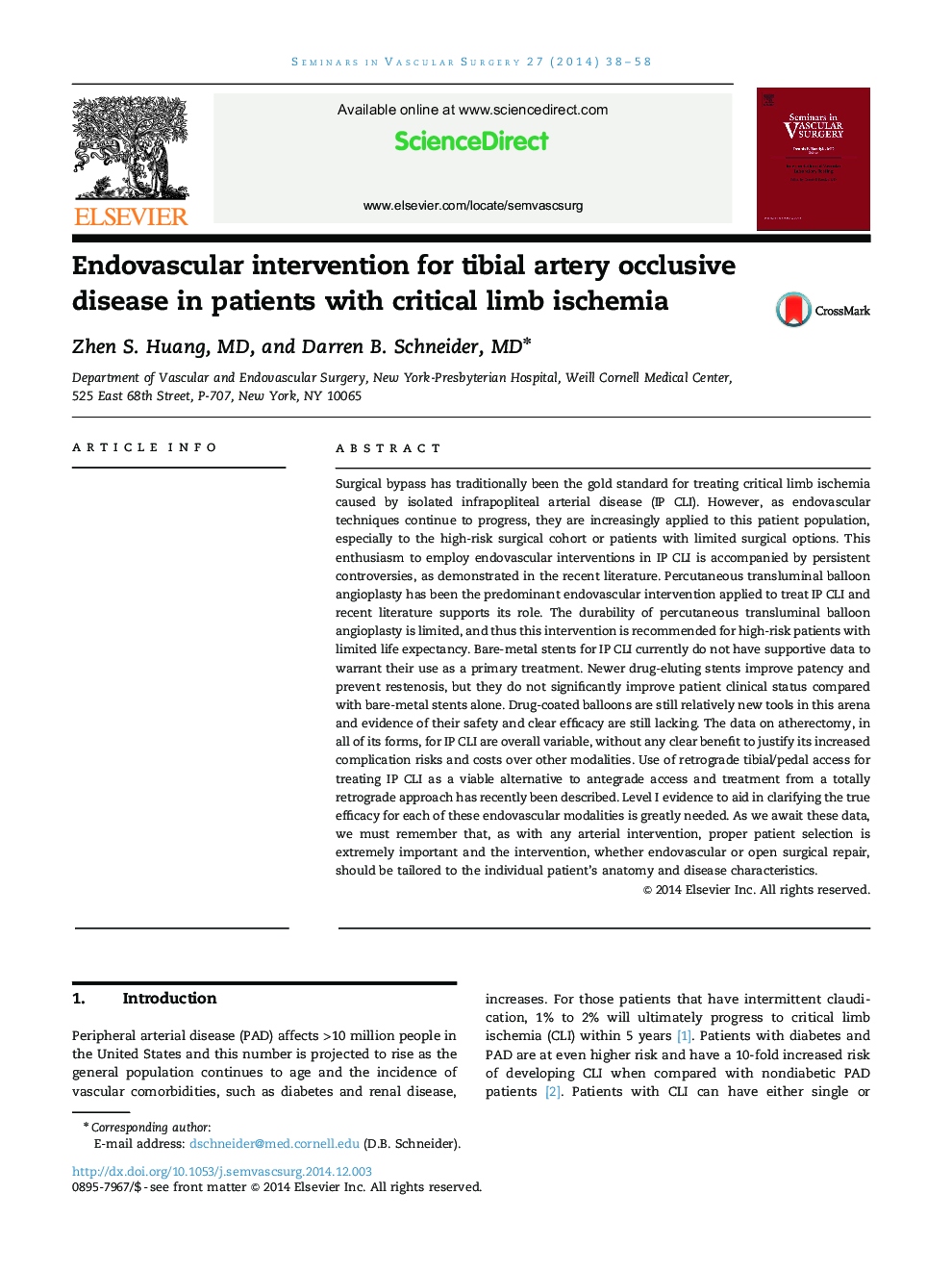| Article ID | Journal | Published Year | Pages | File Type |
|---|---|---|---|---|
| 3026203 | Seminars in Vascular Surgery | 2014 | 21 Pages |
Surgical bypass has traditionally been the gold standard for treating critical limb ischemia caused by isolated infrapopliteal arterial disease (IP CLI). However, as endovascular techniques continue to progress, they are increasingly applied to this patient population, especially to the high-risk surgical cohort or patients with limited surgical options. This enthusiasm to employ endovascular interventions in IP CLI is accompanied by persistent controversies, as demonstrated in the recent literature. Percutaneous transluminal balloon angioplasty has been the predominant endovascular intervention applied to treat IP CLI and recent literature supports its role. The durability of percutaneous transluminal balloon angioplasty is limited, and thus this intervention is recommended for high-risk patients with limited life expectancy. Bare-metal stents for IP CLI currently do not have supportive data to warrant their use as a primary treatment. Newer drug-eluting stents improve patency and prevent restenosis, but they do not significantly improve patient clinical status compared with bare-metal stents alone. Drug-coated balloons are still relatively new tools in this arena and evidence of their safety and clear efficacy are still lacking. The data on atherectomy, in all of its forms, for IP CLI are overall variable, without any clear benefit to justify its increased complication risks and costs over other modalities. Use of retrograde tibial/pedal access for treating IP CLI as a viable alternative to antegrade access and treatment from a totally retrograde approach has recently been described. Level I evidence to aid in clarifying the true efficacy for each of these endovascular modalities is greatly needed. As we await these data, we must remember that, as with any arterial intervention, proper patient selection is extremely important and the intervention, whether endovascular or open surgical repair, should be tailored to the individual patient’s anatomy and disease characteristics.
